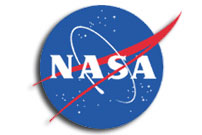NASA OIG: Final Memorandum on the Audit of NASA’s Management of the Test Operations Contract (Report No. IG-08-019; Assignment No. A-07-016-00)

Executive Summary
We found that NASA had not performed sufficient analysis in determining which test sites to include in the TOC; that NASA had adequately defined test operations requirements at contract award; and that Government surveillance and contractor performance evaluations were providing reasonable assurance that efficient methods and effective cost controls were in use.
In 2002, NASA’s Strategic Resources Review (SRR) included an initiative to consider consolidation of the four support contracts for rocket propulsion testing that existed at that time: SSC; MSFC; Johnson Space Center (JSC), White Sands Test Facility (WSTF); and Glenn Research Center (GRC), Plum Brook Station (PBS). The SRR solicited and reviewed rudimentary data and monetary impact projections related to potential contract consolidation options and recommended consolidating all of NASA’s rocket propulsion test operations contracts. The SRR recommendation was to consolidate contracts for all of the test sites into one contract. The SRR recommendation was based on potential benefits that included approximately $70 million in savings, more competition, and fewer Source Evaluation Boards. NASA’s rudimentary review lacked evidence of clear policy rationale and a cost-benefit verification.
Office of Management and Budget (OMB) Circular No. A-94, “Guidelines and Discount Rates for Benefit-Cost Analysis of Federal Programs,” October 29, 1992, recommends, but does not require, that a cost-benefit analysis be used as a management tool when reviewing and considering implementation or changes in Government programs or projects. OMB Circular A-94 provides general guidance for conducting cost-benefit analysis, to include four elements (policy rationale, explicit assumptions, evaluation of alternatives, and cost-benefit verification) to help meet the goal of promoting efficient resource allocation through well-informed decision-making. As a best business practice, NASA should have conducted and documented a more robust analysis of alternatives to support the original SRR contract consolidation recommendation.
The SRR recommendation to consolidate the test contracts for NASA’s four test sites was ultimately rejected by management at WSTF and PBS, citing concerns such as skepticism related to savings projections and perceived loss of control. In November 2002, a follow-on acquisition strategy meeting was held, where it was decided to proceed with consolidation of only the SSC and MSFC contracts into the TOC. The TOC was awarded in 2003. NASA’s test facility operations at WSTF and PBS continued to be supported independently by separate contracts that are not part of the TOC.
We found that NASA had adequately defined the test operations requirements at contract award for the TOC to protect against “out of scope” changes or cost growth.
Additionally, we found that Government surveillance and contractor performance evaluations for the TOC were providing reasonable assurance that efficient methods and effective cost controls were in use. We did not evaluate contract requirements definition or Government oversight of test support contracts at WSTF or PBS because those sites are supported by separate contracts that are independent of the TOC. In our March 17, 2008, draft of this memorandum, we recommended that the Associate Administrator for the Space Operations Mission Directorate (SOMD), via the Manager, Rocket Propulsion Test Program (RPT), conduct a cost-benefit analysis to determine whether further consolidation of NASA’s operations contracts for rocket propulsion testing into the TOC would be beneficial to the Agency. To facilitate further contract consolidation negotiations, the cost-benefit analysis should be conducted before the WSTF test support contract’s completion date (April 29, 2009) and before exercising the next option year for the PBS test contract.
In response to the draft of this memorandum (see Enclosure 2), the RPT Manager concurred with the recommendation, stating that the RPT office will conduct the cost- benefit analysis and, based on the results and other decision criteria, recommend a TOC procurement strategy. Although management did not provide a timeframe for completing the cost-benefit analysis, management’s comments are responsive and the recommendation is resolved. We will close the recommendation upon completion and verification of management’s corrective action.
In addition, the GRC Director also provided comments on a draft of this memorandum. The GRC Director stated that in 2005 the Center had consolidated other GRC contracts for test operations resulting in contract commitments that could extend the contract into calendar year 2015, further recommending that the cost-benefit analysis be delayed until that contract nears completion. The GRC comments also included a concern that use of archival PowerPoint presentations to reflect the Center’s reasons for opting out of the original TOC consolidation effort, without discussing GRC’s position or rationale with senior management, resulted in an incomplete and misleading description of GRC’s position.
Although we believe that additional GRC rocket propulsion test-related contract commitments negotiated subsequent to the 2002 TOC consolidation effort would be a factor in a cost-benefit analysis, those additional contract commitments should not preclude or delay the cost-benefit analysis effort. Therefore, we have not changed our recommendation.
As to our use of the PowerPoint presentation, during the course of our audit we were unable to locate any documentary evidence of GRC’s position. However, at the GRC Director’s suggestion, we provided GRC with an opportunity to provide additional information concerning its original position on the TOC consolidation efforts. In response to our request, the point of contact cited an almost complete turnover of leadership at GRC since 2002, which precluded his ability to provide additional information or clarifications to the original GRC position indicated in the PowerPoint slides we referenced. As a result, we made no changes to the final report.








